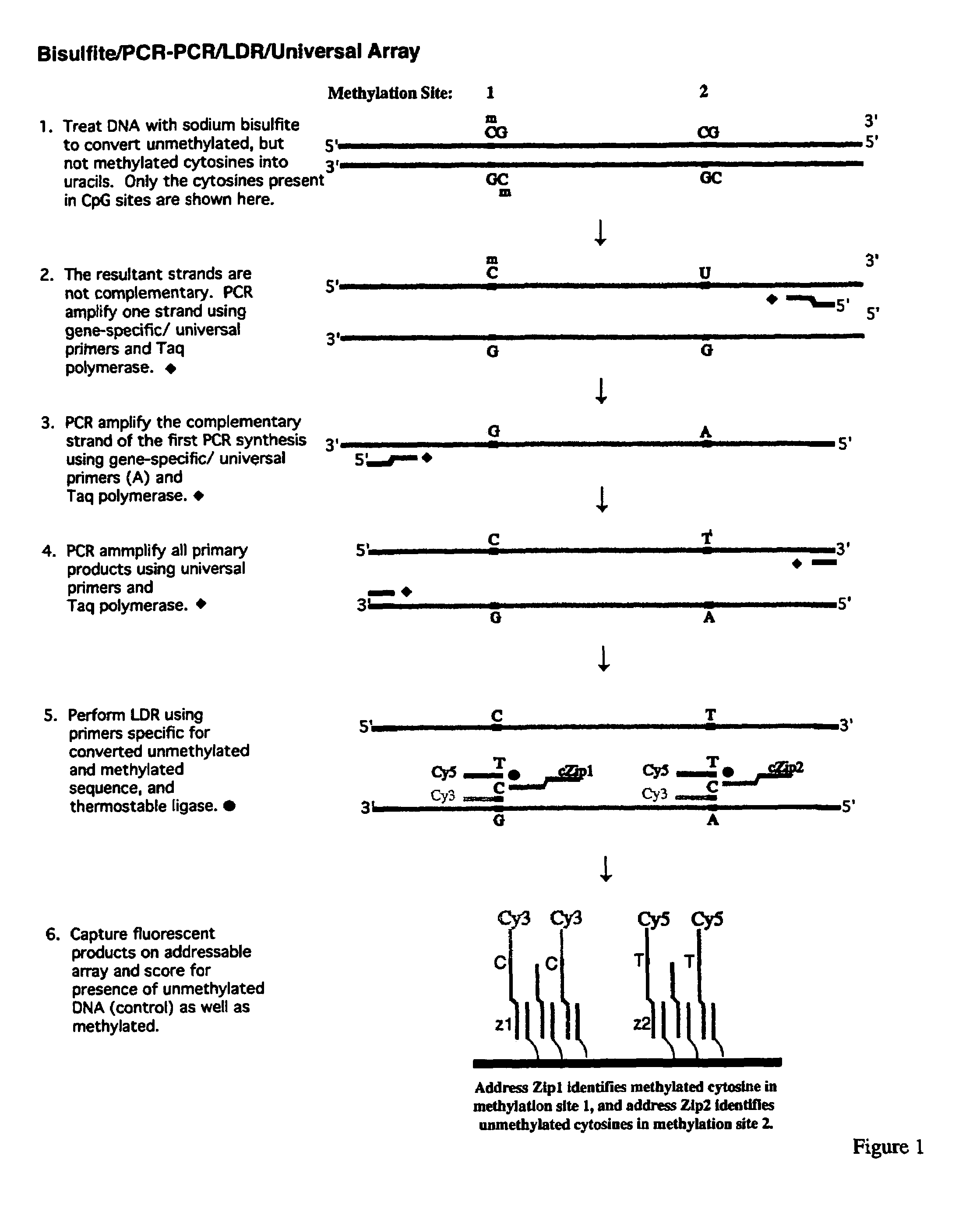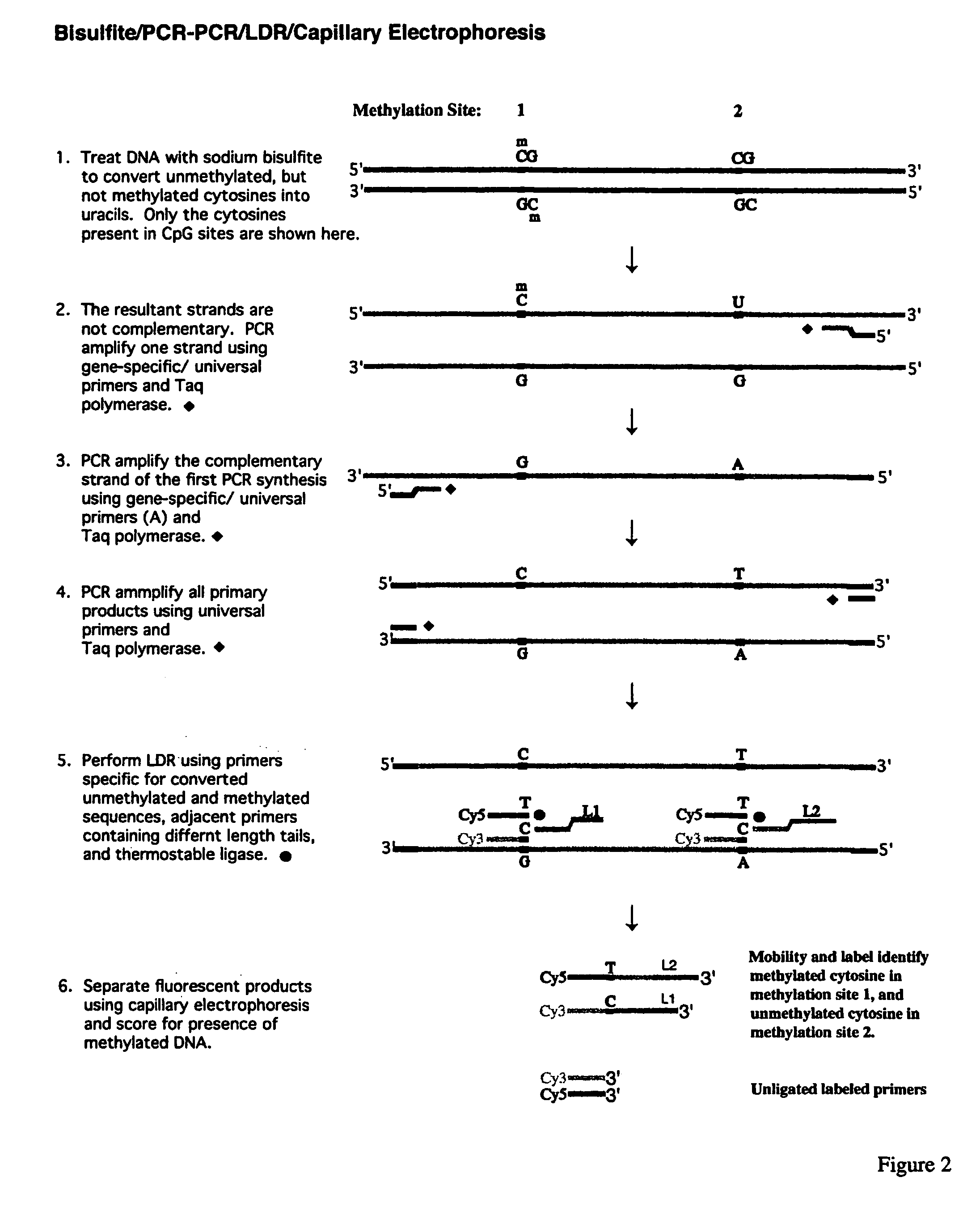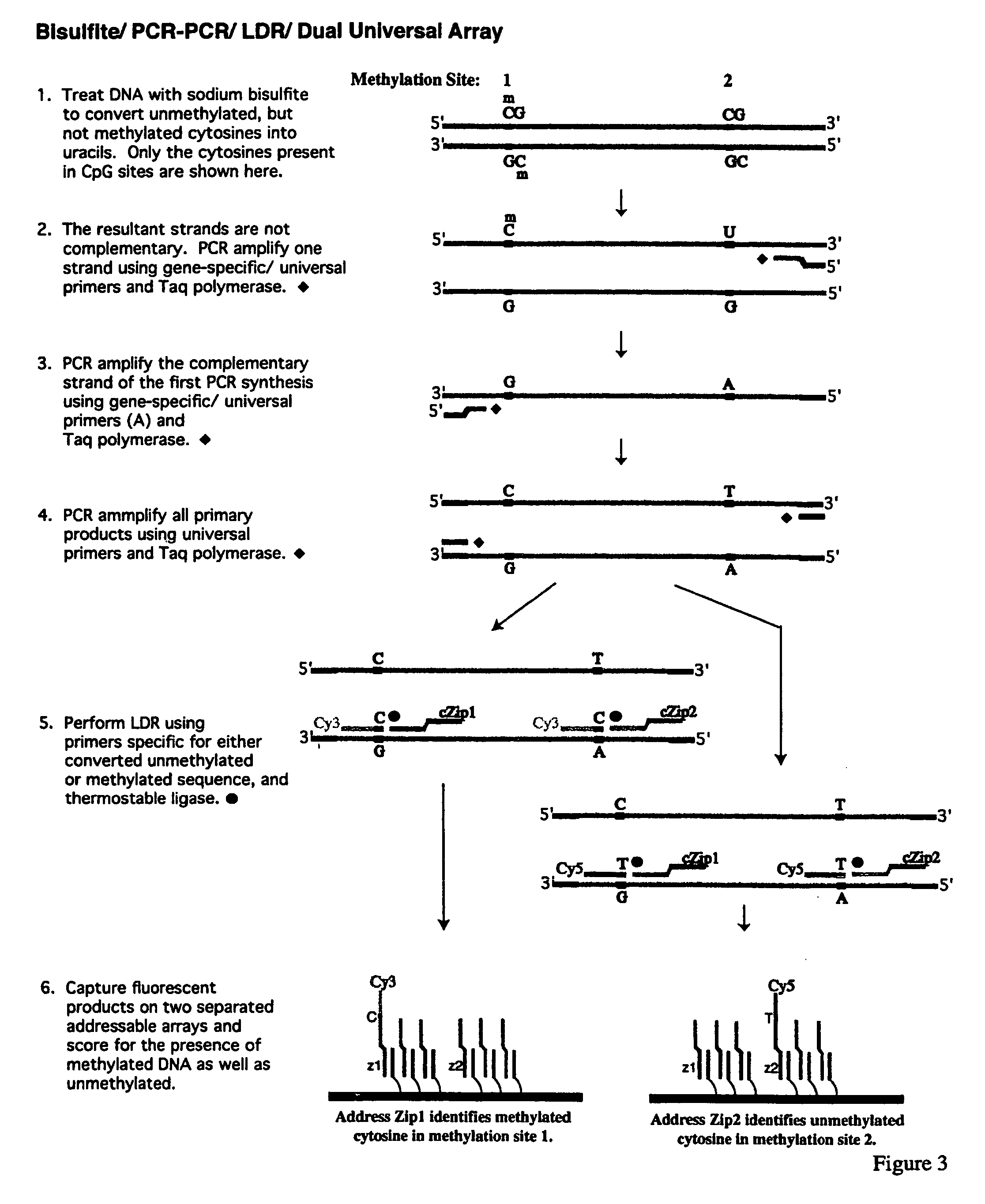Method for detection of promoter methylation status
a technology of promoter methylation and detection method, which is applied in the field of detection of promoter methylation status, can solve the problems of mismatches that interfere with such ligation, and achieve the effects of reducing false-positive signal results, and reducing false-positive selection of methylated alleles
- Summary
- Abstract
- Description
- Claims
- Application Information
AI Technical Summary
Benefits of technology
Problems solved by technology
Method used
Image
Examples
example 1
Reagents and Media
[0164]All routine chemical reagents were purchased from Sigma Chemicals (St. Louis, Mo.) or Fisher Scientific (Fair Lawn, N.J.). Deoxynucleotides were purchased from Applied Biosystems (Foster City, Calif.). SuperPure Plus columns were purchased from Biosearch Technologies Inc (Novato, Calif.). Deoxyoligonucleotides were ordered from Integrated DNA Technologies Inc. Phosphoramidites for primer syntheses were purchased from Glen Research (Sterling, Va.). PCR buffer and AmpiTaq Gold were purchased from Applied Biosystems (Foster City, Calif.). Human genomic DNA was purchased from Roche (Indianapolis, Ind.). SssI methylase was purchased from NewEngland BioLabs (Beverly, Mass.). Proteinase K was purchased from QIAGEN (Valencia, Calif.).
[0165]A 20 μl ligase detection reaction (LDR) contains 20 mM Tris pH 7.6, 10 MM MgCl2, 100 mM KCl, 10 mM DTT, 0.5 mM NAD, 25 mM Tth ligase, 250 fmol LDR probes and pooled multiplex PCR products. Tth ligase storage buffer contains 10 mM T...
example 2
Sodium Bisulfite Treatment of Genomic DNAs
[0166]Sodium bisulfite has been widely use to distinguish 5-methylcytosine from cytosine. Bisulfite converts cytosine into uracil via deamination reaction while leaving 5-methylcytosine unchanged. Genomic DNAs extracted from tumor cell lines and colon tumor samples were used in this study. Typically, 2 μg genomic DNA in a volume of 40 μl was incubated with 0.2N NaOH at 37° C. for 10 minutes. 30 μl freshly made 10 mM hydroquinone and 520 μl of freshly made 3M sodium bisulfite were then added. 3M sodium bisulfite was made with 1.88 g sodium bisulfite (Sigma Chemicals, ACS grade) dissolved in a final total 5 μl deionized H2O with final pH 5.0. This mixture was then incubated for 16 hours in a DNA thermal cycler (Perkin Elmer Cetus) with the cycles of 50° C. for 20 minutes followed by a denaturing step of 85° C. for 15 seconds. The bisulfite-treated DNAs can be desalted using MICROCON centrifugal filter devices (Millipore, Bedford, Mass.) or, al...
example 3
Multiplex PCR Amplification
[0167]The promoter regions of cancer genes are amplified in a multiplex fashion to increase the throughput. A schematic diagram of this procedure is shown in FIG. 1. The multiplex PCR of the present invention has two stages, namely a gene-specific amplification (stage one) and an universal amplification (stage two). Three promoter regions were simultaneously amplified in one PCR reaction. The current protocol was designed to do parallel analysis at 16 promoter regions. The PCR primers (as shown in Table 1) were grouped as follows to minimize the nonspecific amplification and primer dimers during the multiplex PCR. Group 1: p15, p21, and APC. Group 2: p19, p27, and ECAD. Group 3: p16, p53, and BRCA1. Group 4: MGMT, DAPK, and GSTP1. Group 5: TIMP3, RASSF1, and RARβ. SNRPN gene was used as an internal positive control.
[0168]The gene-specific PCR primers were designed such that the 3′ sequence contains a gene-specific region and an universal sequence attached ...
PUM
| Property | Measurement | Unit |
|---|---|---|
| pH | aaaaa | aaaaa |
| pH | aaaaa | aaaaa |
| Tm | aaaaa | aaaaa |
Abstract
Description
Claims
Application Information
 Login to View More
Login to View More - R&D
- Intellectual Property
- Life Sciences
- Materials
- Tech Scout
- Unparalleled Data Quality
- Higher Quality Content
- 60% Fewer Hallucinations
Browse by: Latest US Patents, China's latest patents, Technical Efficacy Thesaurus, Application Domain, Technology Topic, Popular Technical Reports.
© 2025 PatSnap. All rights reserved.Legal|Privacy policy|Modern Slavery Act Transparency Statement|Sitemap|About US| Contact US: help@patsnap.com



